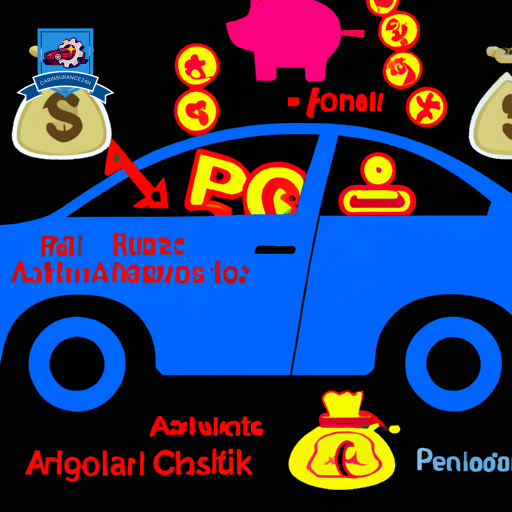In the domain of personal finance, finding strategies to lower expenses without sacrificing quality is paramount. One often-overlooked avenue for cost reduction is through the adjustment of auto insurance premiums, particularly by reducing annual mileage.
Insurance companies typically offer discounts to drivers who log fewer miles, under the premise that less time on the road translates to a lower risk of accidents. This concept prompts a closer examination of one’s driving habits and the potential for substantive savings.
As we explore strategies for mileage reduction and effective communication with insurers, the question arises: how significant can these savings be, and what changes might individuals consider to qualify for reduced premiums?
Understanding Mileage Discounts

How do mileage discounts work, and why are they offered by insurance companies?
Mileage discounts are premised on the idea that the less you drive, the lower your odds of getting into an accident and making an insurance claim. Consequently, insurance companies offer these discounts as an incentive for drivers to limit their vehicle usage, ultimately benefiting both the policyholder through reduced premiums and the insurer by minimizing risk exposure.
The mechanism of mileage discounts is straightforward yet demands accuracy and honesty. To qualify for a discount, policyholders must provide their insurer with the annual mileage typically covered by their vehicle. This is where mileage verification becomes essential. Insurers may request odometer readings or use telematics devices to accurately gauge vehicle usage. The data collected not only determines discount eligibility but also helps in adjusting the policyholder’s premium rates accurately.
Discount eligibility is directly tied to the mileage threshold set by the insurance company. Each insurer has its own criteria for what constitutes ‘low mileage,’ and it’s imperative for policyholders to understand these parameters. Generally, drivers who clock less than the average 12,000 to 15,000 miles per year may qualify for a reduction in their insurance rates. However, the specific mileage cap for eligibility can vary significantly between insurers.
Assessing Your Driving Habits

To accurately assess your driving habits, it is essential to contemplate the frequency, distance, and purpose of your vehicle use. Understanding these factors is important for anyone looking to reduce their annual mileage as a strategy to save on insurance costs. It’s not just about cutting back on unnecessary trips but also about being mindful of how each journey affects your overall vehicle maintenance and insurance rates. Work commutes, for instance, can play a vital role in your mileage. By evaluating your driving habits, you can identify opportunities for adjustments that could lead to savings.
When considering your driving habits, focus on:
-
Frequency of Use: How often you use your vehicle sets the baseline for your annual mileage. It includes everything from daily work commutes to weekend excursions. Keep a log for a typical week or month to capture a clear picture of your vehicle’s usage patterns.
-
Purpose of Trips: Differentiate between essential and non-essential trips. Essential trips might include work commutes, grocery shopping, and medical appointments. Understanding the purpose behind your trips can help you prioritize vehicle use for necessities while reducing discretionary outings.
-
Distance Traveled: The distance of your regular routes, especially work commutes, plays an important role in accumulating mileage. Evaluate the length of each trip to identify potential for reduction. For instance, you might find alternative routes that are shorter or consider carpooling to decrease the distance driven individually.
Strategies for Mileage Reduction

Once you have a clear understanding of your driving habits, implementing strategies for mileage reduction can greatly lower your insurance costs. The key to successfully reducing your annual mileage—and by extension, your insurance premiums—lies in identifying practical and sustainable alternatives to your current transportation methods.
A substantial strategy involves leveraging public transportation for daily commutes or routine travel. Cities and even suburban areas often provide extensive public transit systems, including buses, trains, and subways. These not only reduce the wear and tear on your personal vehicle but also contribute to lessening your environmental footprint. By allocating a portion of your travel to public transportation, you can significantly decrease the number of miles you drive annually.
Carpooling options offer another viable strategy for mileage reduction. Whether organizing a carpool with colleagues for the commute to work or sharing rides for school drop-offs and extracurricular activities, carpooling reduces the frequency with which each participant needs to use their own vehicle. This collaborative approach not only splits travel costs among participants but also contributes to lowering each individual’s total mileage.
Incorporating these strategies requires a shift in routine and possibly even a change in mindset. However, the benefits—both financial, regarding reduced insurance costs, and environmental—can be substantial. By critically evaluating your transportation needs and being open to alternatives like public transportation and carpooling, you can effectively reduce your annual mileage. This proactive approach towards mileage management not only supports your financial well-being but also promotes sustainable living practices.
Communicating With Your Insurer

After implementing strategies for mileage reduction, the next step involves effectively communicating these changes to your insurance provider. This is a critical stage where clarity and precision in communication can lead to substantial savings on your insurance premiums. Policy updates reflecting your reduced mileage can adjust your risk profile and potentially access more favorable coverage options. Here’s how to approach this conversation:
-
Gather Documentation: Before contacting your insurer, compile evidence of your reduced mileage. This could include maintenance records, odometer readings, and any other documentation that supports your claim. Having concrete evidence will make your case stronger and facilitate the process of updating your policy.
-
Understand Your Policy: Familiarize yourself with the current terms of your insurance policy. This knowledge will empower you to ask the right questions and understand which coverage options are most relevant to your new driving habits. It will also help you to better evaluate any proposed changes by the insurer.
-
Schedule a Policy Review: Reach out to your insurance agent or customer service to request a policy review. During this meeting or call, present your documentation of reduced mileage and inquire about how this change affects your policy. Discuss the possibility of adjusting your coverage options to better match your current needs and explore any discounts or savings opportunities available.
Real-Life Savings Examples

Understanding the impact of reduced annual mileage on insurance premiums can be further exemplified by examining real-life savings examples from policyholders who have successfully navigated this adjustment. Many individuals have reported significant financial relief by simply altering their driving habits, leveraging telecommuting benefits, and exploring carpooling advantages.
One such example involves a software engineer named Alex, who shifted to a telecommuting role. By working from home, Alex’s vehicle mileage decreased from 15,000 to just 5,000 miles annually. This change not only contributed to a healthier work-life balance but also led to a 30% reduction in his car insurance premium, translating to hundreds of dollars saved each year. Alex’s story highlights the tangible telecommuting benefits that extend beyond mere convenience.
Similarly, Sarah, a nurse, decided to utilize carpooling advantages by sharing rides with colleagues for her thrice-weekly shifts. This strategy halved her annual mileage and resulted in a 20% decrease in insurance costs. Sarah’s experience underscores the dual benefits of carpooling: reduced environmental impact and considerable financial savings.
Both examples underscore the direct correlation between decreased annual mileage and lower insurance premiums. By embracing telecommuting benefits and carpooling advantages, policyholders can not only save money but also contribute to a more sustainable lifestyle. Insurance companies recognize these efforts by adjusting rates accordingly, offering a win-win scenario for both parties. Individuals looking to economize should consider these real-life examples as motivation to reassess their driving habits and explore similar adjustments.
Frequently Asked Questions
How Does Reducing Annual Mileage Affect the Resale Value of a Vehicle?
Reducing annual mileage can positively impact a vehicle’s resale value by slowing depreciation factors. However, it is essential to avoid mileage fraud risks, ensuring any reduction in mileage is accurately reflected and verifiable.
Can Reducing My Annual Mileage Negatively Impact My Car’s Performance or Maintenance Needs?
Reducing annual mileage can potentially lead to less engine wear and improved battery health, thereby not negatively impacting your car’s performance or maintenance needs. On the contrary, it may contribute positively to vehicle longevity.
Are There Any Tax Implications or Benefits for Reporting Lower Mileage to My Insurance Company?
Reporting reduced mileage to your insurance company may not directly offer tax deductions. However, accurately documenting lower mileage can protect against mileage audits and potentially support claims for work-related vehicle use deductions.
How Do Insurers Verify the Mileage I Report, and What Happens if There Is a Discrepancy?
Insurers employ various mileage tracking methods, such as telematics devices, to verify reported figures. If a discrepancy is found, penalties can range from policy adjustments to cancellations, emphasizing the importance of accurate mileage reporting.
Can Reducing My Annual Mileage Qualify Me for Any Other Types of Discounts or Rewards Programs Outside of Insurance Savings?
Reducing annual mileage can qualify individuals for mileage-based rewards and travel incentives from various programs. These benefits are designed to reward low-mileage drivers with discounts or perks, enhancing the value of mindful driving habits.










